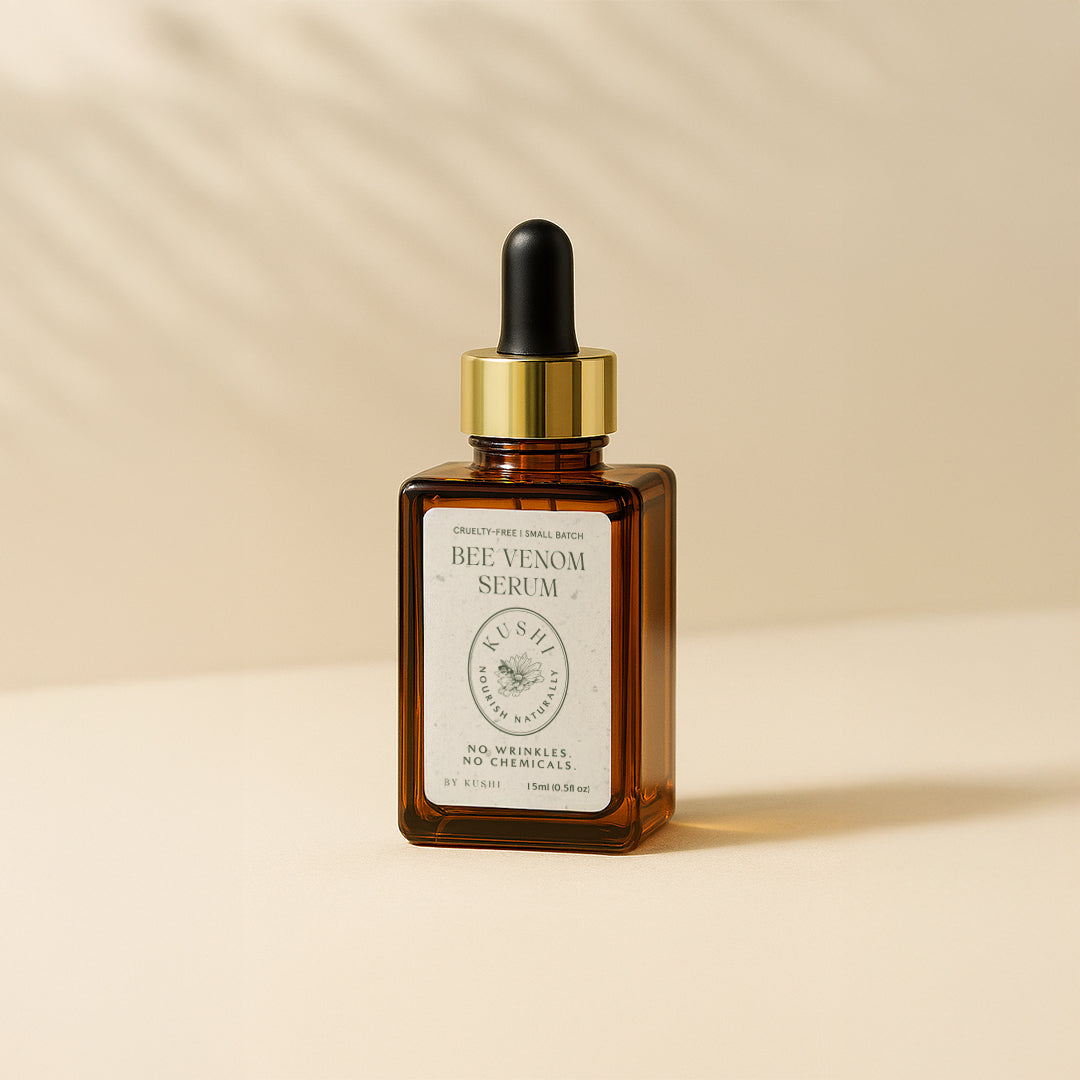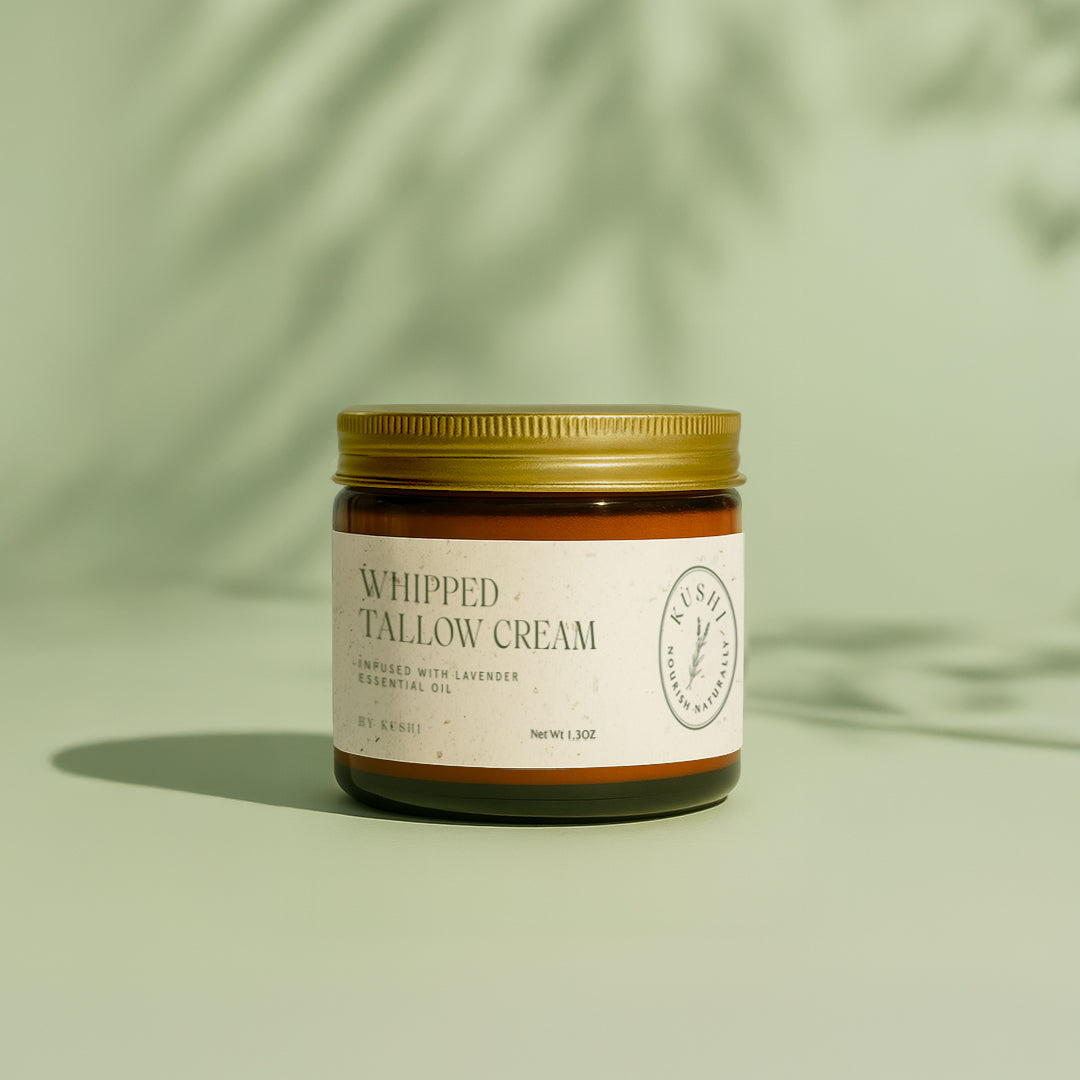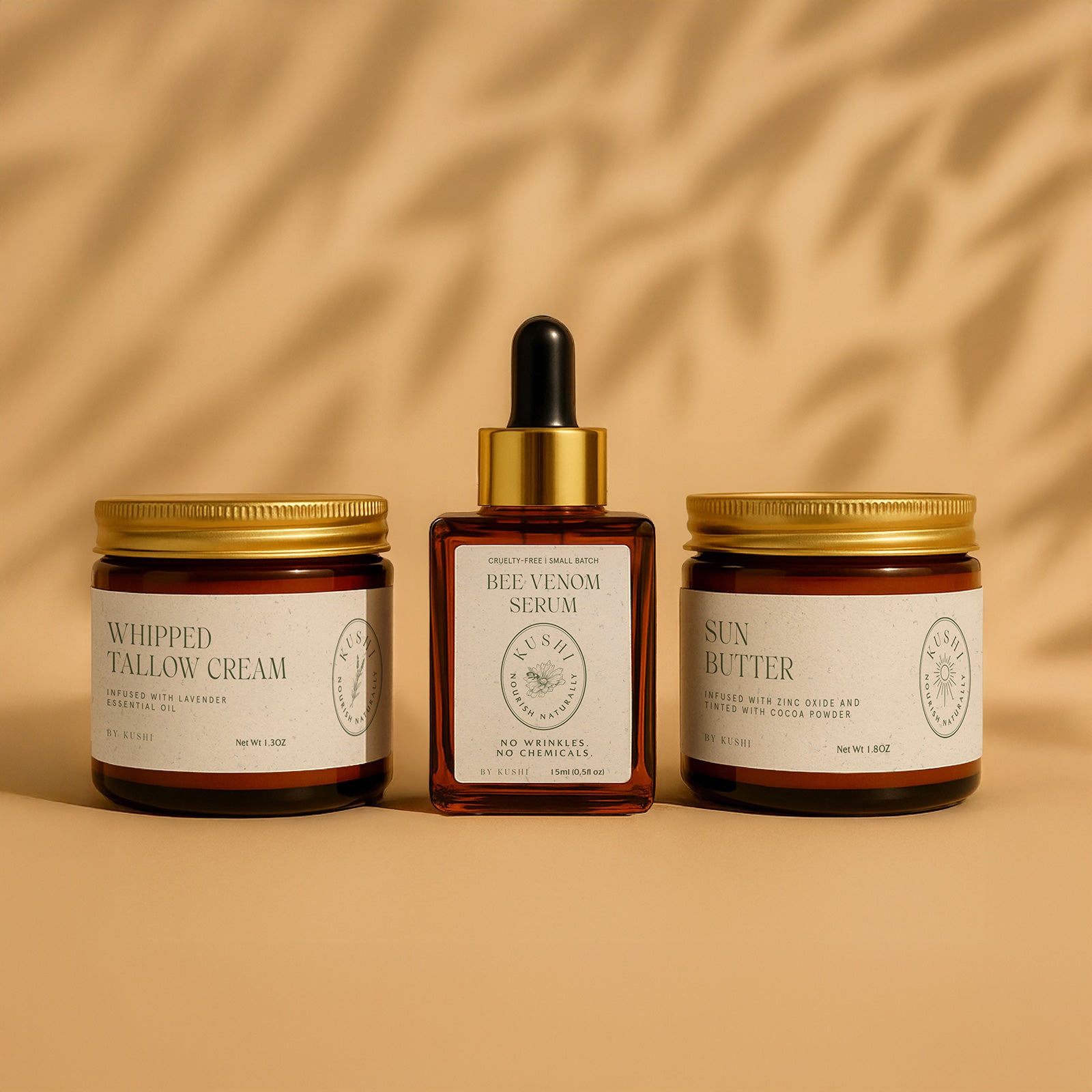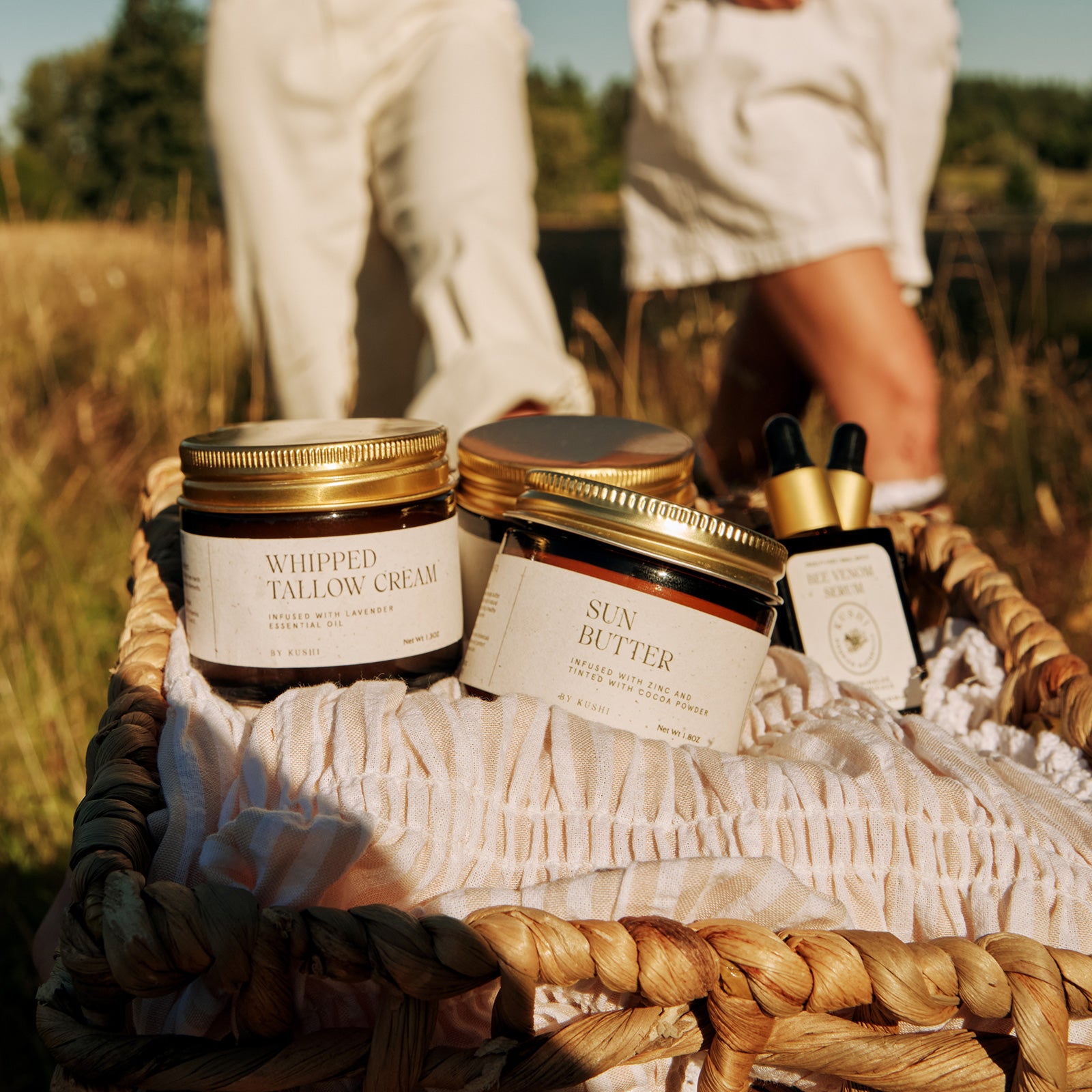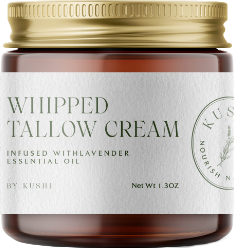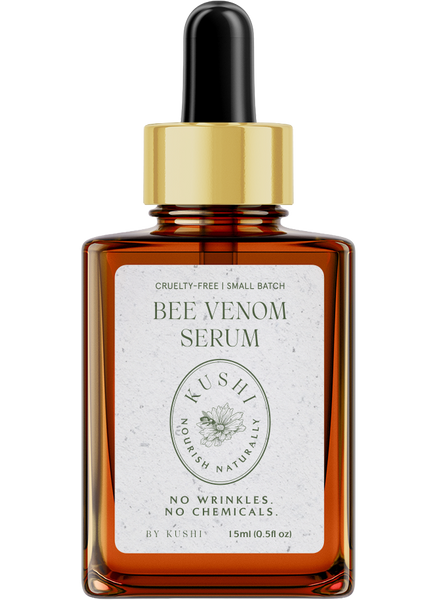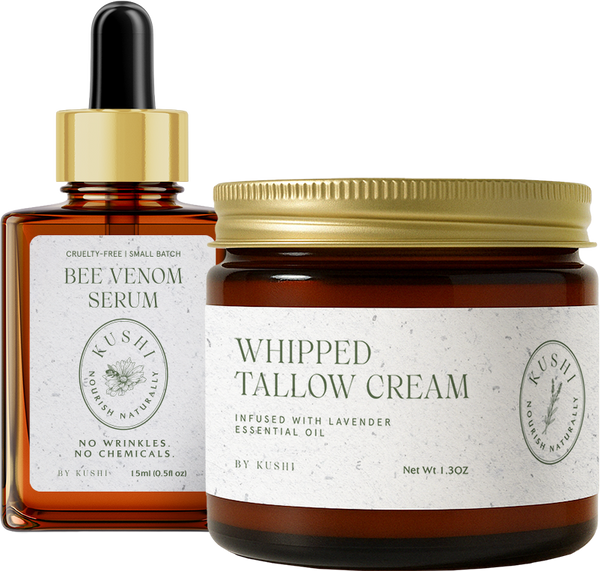Tallow Vs Lard: Which Is Better For Your Skin?

Key Takeaways:
- Tallow's Superior Compatibility: Tallow's fatty acid profile closely mimics human skin sebum, leading to better absorption, reduced pore clogging, and enhanced skin barrier support, especially for sensitive skin.
- Nutrient Density: Grass-fed tallow is a powerhouse of essential fat-soluble vitamins (A, D, E, K) and beneficial fatty acids (stearic, palmitic, oleic, CLA), providing deeper nourishment and anti-inflammatory benefits compared to lard.
- Purity and Sustainability: Ethically sourced, grass-fed tallow offers a cleaner, more stable product with a gentler scent, reflecting a conscious choice for both personal and environmental well-being in skincare.
In a world of synthetic skincare, many are turning back to simple, time-tested ingredients, and animal fats like tallow and lard are making a quiet but powerful comeback. Both have been used for generations to nourish, heal, and protect the skin. But when it comes to choosing between the two, not all fats are created equal.
At Kushi, we’re passionate about formulating with ingredients that mirror your skin’s natural makeup, because what you put on your skin should support its biology, not disrupt it. That’s why the tallow vs lard debate matters. While both offer some moisturizing benefits, only one stands out regarding absorption, nutrient profile, and compatibility with sensitive, results-driven skin.
In this post, we’ll discuss the differences between tallow and lard, compare their skincare benefits, and explain why one is better for cleaner, healthier, and firmer-looking skin.
Tallow Vs Lard For Skin: Breaking Down The Basics
Let’s explore how these time-honored ingredients differ and what each offers your skin.
What Is Tallow?
Tallow is a rendered form of beef or mutton fat, most often sourced from grass-fed cattle. Rich in bioavailable vitamins A, D, E, and K, tallow contains a fatty acid profile that closely mimics the structure of human skin sebum. Because of this unique similarity, tallow absorbs easily, delivering deep hydration and a radiant, nourished look. Traditionally used in salves and balms, it’s celebrated for its ability to restore skin’s balance, strengthen the moisture barrier, and calm irritation.
What Is Lard?
Lard, on the other hand, comes from rendered pig fat. It, too, is packed with beneficial fatty acids and was once a staple in homemade skin balms and remedies. Though lard offers moisturizing properties and a rich, creamy texture, its composition is less similar to human sebum than tallow's. Lard typically contains higher amounts of omega-6 fatty acids, which can be nourishing but may be less suited for extremely sensitive skin types.
Key Differences In Composition
Tallow’s fatty acid profile (especially its stearic, palmitic, and oleic acids) aligns more closely with what our skin naturally produces. This means it not only hydrates but supports natural repair and anti-inflammatory processes. Lard, while also emollient, is higher in linoleic acid and may be heavier for some skin types, especially for those who are prone to clogged pores.
Tradition, Purity, And Simplicity
Both tallow and lard reflect a return to simple, authentic skincare that avoids harsh chemicals and unnecessary additives. However, tallow’s closer match to our skin’s needs has cemented its reputation as a standout for sensitive, dry, or problem skin.
Nutritional Profiles: Which Fat Is More Skin-Friendly?
When evaluating tallow vs lard for skin, the real difference comes down to their nutritional profiles, specifically, the types of fatty acids and skin-supporting nutrients they contain. While both are rich in lipids that moisturize and protect the skin, tallow consistently outperforms lard in terms of bioavailability, skin compatibility, and long-term benefits.
Tallow (Beef Fat): A Nutrient Powerhouse
Tallow, especially when sourced from grass-fed cattle, like we use at Kushi, is rich in skin-compatible compounds that deeply nourish and repair. These include:
- Stearic Acid: Strengthens the skin barrier and improves moisture retention.
- Palmitic Acid: Aids in hydration and smooths skin texture.
- Oleic Acid (Omega-9): Helps restore suppleness and calm inflammation.
- Conjugated Linoleic Acid (CLA): Offers anti-inflammatory and antimicrobial benefits.
- Vitamins A, D, E & K: Support cell turnover, elasticity, and overall skin health.
This composition makes tallow almost bio-identical to human sebum, meaning it absorbs easily, won’t clog pores, and helps balance the skin’s natural oil production.
Lard (Pork Fat): Still Moisturizing, But Less Targeted
Lard contains many of the same fatty acids as tallow, but in different proportions, and it lacks the full spectrum of fat-soluble vitamins that make tallow so skin-friendly. Its composition tends to be:
- Higher in oleic acid, which is great for dry skin but may clog pores in oily or acne-prone types.
- Lower in stearic and palmitic acids, which are essential for barrier repair.
- Less stable over time, making it more prone to oxidation and rancidity without heavy processing.
Lard can still provide basic hydration and softness but doesn't deliver the same skin-structure support or long-term benefits.
Skin Type Considerations: Tallow Vs Lard For Sensitive Skin
When choosing the right moisturizer or skin treatment, your skin type matters as much as the ingredient list. And for sensitive, reactive, or allergy-prone skin, the difference between tallow and lard can have a significant impact.
At Kushi, we formulate for real people, not just ideal skin conditions. So, we examine how tallow and lard perform specifically for sensitive skin types.
Tallow: Naturally Compatible With Sensitive Skin
Tallow, especially from grass-fed, minimally processed sources like those we use at Kushi, is known for its close resemblance to the skin’s sebum. This makes it:
- Easily absorbed without clogging pores
- Non-irritating, even for eczema- or rosacea-prone skin
- Rich in skin-calming nutrients, like vitamin D and CLA (conjugated linoleic acid), which reduce inflammation.
Because it supports the skin’s barrier function and helps prevent moisture loss, tallow is especially effective for individuals with dry, tight, or reactive skin. It doesn’t require synthetic stabilizers or harsh preservatives, which makes it even more suitable for people avoiding common irritants.
Lard: Moisturizing, But More Reactive
Lard has long been used for skin softening and basic moisturization, but it can pose challenges for more delicate skin:
- It’s higher in oleic acid, which is deeply moisturizing but may be comedogenic (pore-clogging) for some skin types.
- It can have a stronger scent and often requires more refining to reduce impurities, steps that can sometimes involve chemical processing.
- Less bio-identical to human sebum, which may reduce compatibility with sensitive or acne-prone skin.
While some people tolerate lard well, it’s not as predictably gentle or supportive as tallow, especially for those navigating chronic skin sensitivities.

Ethical Sourcing And Purity: Why It Matters
When comparing tallow vs lard for skin, it’s not just about how the ingredients perform on your face; it’s also about how they’re sourced, processed, and what values they reflect.
Grass-Fed Tallow: Clean, Transparent, And Nutrient-Rich
We exclusively use grass-fed beef tallow from farms prioritizing animal welfare, environmental health, and regenerative practices. Why? Because how the animal lives directly affects the quality of the fat it produces, and, by extension, what ends up on your skin.
- Grass-fed tallow is higher in key vitamins (A, D, E, K) and anti-inflammatory compounds like CLA.
- It’s free of growth hormones, antibiotics, and grain-fed toxins often found in conventional livestock.
- Our tallow is minimally processed, preserving its natural structure and bioavailability without chemical interference.
By supporting sustainable farming, we’re not just creating better skincare, we’re making a better choice for the planet and the people who use our products.
Lard: Often Less Regulated, More Heavily Processed
Lard is more commonly produced as a byproduct of conventional pork farming, which typically involves:
- Grain-fed, confined animal operations that may use hormones or antibiotics
- Less regulation around purity and traceability
- Heavy refinement processes are used to mask scent, extend shelf life, or stabilize the product, sometimes using synthetic additives.
These differences are significant for skincare consumers who value clean beauty and ingredient transparency. Even if lard can moisturize, the lack of sourcing integrity and potential impurities make it less desirable for topical use, especially on sensitive or inflamed skin.
Shelf Stability And Texture: What to Expect
Both tallow and lard have unique shelf life and texture characteristics, and understanding these subtleties can inform a more satisfying, authentic approach to natural self-care.
Shelf Life: Staying Fresh Naturally
Tallow is revered for its impressive shelf stability. Thanks to its unique blend of saturated and monounsaturated fats, tallow is naturally resistant to oxidation and rancidity, especially when rendered properly and stored in a cool, dry place. This means it can remain fresh for many months, sometimes even up to a year, without the need for added preservatives.
Lard, by contrast, contains a higher proportion of polyunsaturated fats. While still a traditional and beloved option, lard is more prone to oxidation, which can cause it to spoil faster than tallow—especially if not stored correctly. Lard-based products generally benefit from refrigeration and careful attention to freshness.
Texture: The Feel Under Your Fingertips
Tallow and lard each bring distinct textures to natural skincare. Tallow, when whipped or blended with botanicals, yields a luxuriously rich, velvety cream. Its dense yet readily absorbed profile means it melts effortlessly into the skin, creating a nourishing, non-greasy finish that mimics the skin’s own natural oils.
Lard, meanwhile, tends to make for a softer, sometimes greasier balm. It imparts a smooth glide, but may linger on the skin—especially for those with naturally oily complexions. The difference in fatty acid profile can make lard feel heavier, which some find soothing, and others may find less appealing for daily facial use.
Aroma And Color: Authentic Simplicity
Texture isn’t just about touch—it’s an experience that engages other senses, too. Tallow, especially when sourced from grass-fed, pasture-raised animals, carries a mild, clean scent and a creamy hue. When paired with gentle botanicals, it’s especially appealing for sensitive skin.
Lard’s aroma can be slightly stronger and more prominent, with a pale, almost translucent color. This distinctiveness speaks to its authenticity, but can sometimes be off-putting for those sensitive to natural animal-based scents.
Why Tallow Is At The Heart Of Premium Skincare Formulas
Let’s explore why carefully sourced, grass-fed tallow takes center stage in modern skin nourishment and why it’s the foundation of our best-selling Whipped Tallow Cream at Kushi.
Skin-Loving Lipids That Mimic Our Own
Human skin naturally produces sebum, a blend of lipids essential for hydration and defense. Tallow contains a unique spectrum of fatty acids, such as stearic and oleic acid, that closely resemble those found in healthy human skin. This similarity translates to unparalleled absorption and compatibility: tallow-based products sink in easily, supporting skin’s natural barrier without feeling greasy or heavy.
A Treasure Trove Of Vitamins For Deep Nourishment
Tallow isn’t just a moisturizer—it’s a concentrated source of vitamins A, D, E, and K. These fat-soluble nutrients are vital for skin renewal, elasticity, and radiance. Since tallow’s vitamins are bioavailable (readily absorbed and used by the body), they feed the skin at a cellular level, promoting faster recovery from dryness, irritation, and environmental stress.
Safe For Sensitive And Problematic Skin
Unlike many commercial creams filled with fillers, fragrances, and harsh chemicals, tallow-based care honors simplicity and integrity. Pure tallow is inherently non-comedogenic and anti-inflammatory, making it suitable even for those dealing with eczema, rosacea, or acne. Its gentle nature ensures that the entire family, from babies to elders, can experience relief and protection, without fear of triggering reactions.
Sustainably Sourced, Consciously Crafted
Beyond its wellness benefits, tallow supports a sustainable, earth-friendly approach to skincare. Modern tallow formulas reduce waste and respect our bodies and the environment by repurposing a nutrient-rich ingredient from grass-fed and ethically raised animals. It’s a way to honor tradition while paving the way for a healthier, more sustainable future in self-care.
Final Thoughts
Returning to natural, skin-friendly ingredients, both tallow and lard offer a nostalgic nod to simpler self-care. But when it comes to truly supporting the skin’s structure, resilience, and health, tallow rises above the rest. Its unique similarity to human sebum, superior nutrient density, and ethical sourcing potential make it the gold standard for clean, results-driven skincare.
At Kushi, we believe in using what works with your skin, not against it. Our Whipped Tallow Cream is crafted with grass-fed, ethically sourced beef tallow—free of synthetic additives and full of nature’s most skin-compatible nourishment. Whether you’re managing sensitivity, dryness, or simply looking for a richer, more radiant complexion, tallow is the ingredient that honors both your skin and the planet.
Read also:
- What Is Whipped Tallow? Benefits & Uses For Glowing Skin
- Tallow Balm Explained: What It Is And Why It’s Amazing For Your Skin
- Anti-Inflammatory Skin Care With Beef Tallow: Soothe, Heal, And Restore Naturally
Frequently Asked Questions About Tallow Vs Lard: Which Is Better For Your Skin?
How is tallow different from lard in terms of composition?
Tallow is rendered from the fat of grass-fed cattle, while lard comes from pork. Tallow is rich in bioavailable vitamins like A, D, E, and K, and its fatty acid profile closely mimics that of human skin, making it especially absorbable and nourishing. Lard contains more monounsaturated fats and is slightly softer in texture, but it doesn’t offer the same spectrum of skin-loving nutrients or the skin-identical lipids that tallow does.
Can tallow or lard trigger allergies?
Allergies to pure tallow or lard are infrequent, as these animal fats do not typically contain common allergens found in synthetic or plant-based skincare. Nonetheless, if you have a known sensitivity to beef or pork, or to any essential oils added (such as lavender), check labels carefully and test a small area before applying widely.
Are there any ethical concerns with using tallow or lard?
Ethical considerations largely depend on sourcing. At Kushi, we are committed to using only 100% grass-fed and finished beef tallow sourced from responsible Canadian farms. We prioritize animal welfare and sustainability in our supply chain. For those concerned with animal rights or industrial agriculture, seeking transparent, ethical sourcing products can help ease concerns.
Can vegans use tallow or lard?
Tallow and lard are animal-derived ingredients, so they are unsuitable for vegans. Individuals following a vegan lifestyle may wish to explore plant-based alternatives, though these often require synthetic stabilizers or emulsifiers to achieve the same richness and barrier protection as tallow.
Is tallow or lard more sustainable?
When sourced from ethical, regenerative farms, tallow, like that used in Kushi’s creams, can be a highly sustainable ingredient. It utilizes a part of the animal that would otherwise go to waste, supporting nose-to-tail practices and reducing environmental impact. Lard can also be sustainable when sourced responsibly, but the broader ecological footprint depends on the farming methods behind the animal products.
How do I choose between tallow and lard for my skin type?
If you seek deep hydration, support for sensitive or problem skin (such as eczema, rosacea, or acne), or gentle moisturizing for the whole family, grass-fed tallow is often the superior choice due to its bioavailability and similarities to human skin lipids. Lard may offer softness but lacks the skin-specific vitamins and structure of tallow. Regardless of your choice, ensure the product is free from additives, is ethically sourced, and is suited to your particular skin needs.
